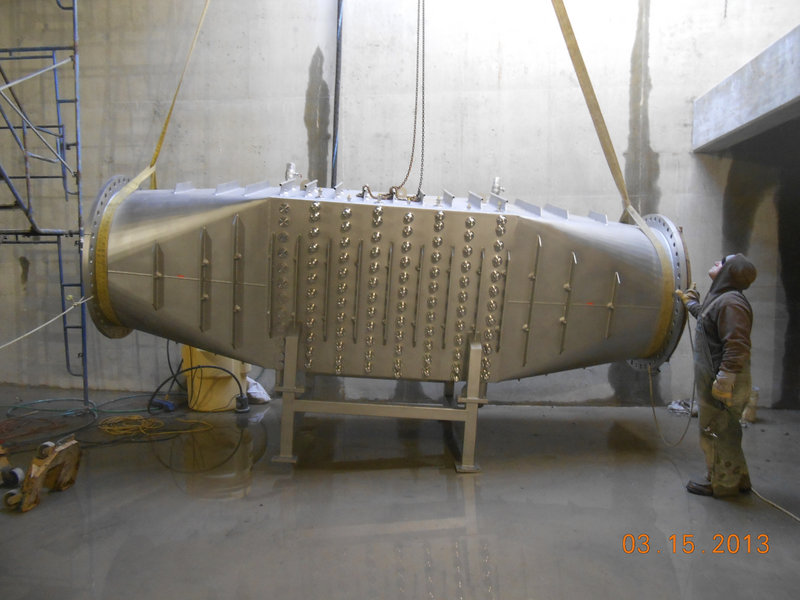Rates for customers of the Portland Water District are unlikely to increase for at least a couple of years despite a $12.8 million project designed to eliminate pathogens from the public drinking water supply.
District officials announced Monday they have reached a milestone in the effort to upgrade the Sebago Lake Water Treatment Facility.
On Friday, crews installed a 5.5-ton ultraviolet disinfection unit in an unused underground well at the district’s facility in Standish. It’s the first key component of the project, which began last summer.
The ultraviolet unit, which is 14 feet long, contains 84 lamps and can treat 52 million gallons of water a day. A second unit will be installed later this year to serve as a backup.
The process sends water through a reactor that is equipped with ultraviolet lamps. As water is exposed to the light, the light penetrates micro-organisms and kills them.
The project’s impact on users’ rates probably won’t be known until 2015, after the district has paid down some of its debt and the UV units’ energy-efficiency features have had a chance to reduce costs, said Michelle Clements, spokeswoman for the water district.
“If there is an impact on water rates, it will be minimal,” she said.
Clements said the improved disinfection system was mandated by the federal government.
The Portland Water District supplies drinking water from Sebago Lake to an estimated 50,000 commercial and residential ratepayers in 11 communities. Windham, Cumberland, Raymond, Falmouth, Portland, Westbrook, South Portland, Standish, Gorham, Scarborough and Cape Elizabeth get their drinking water from Sebago Lake.
The U.S. Environmental Protection Agency requires surface water treatment facilities to improve drinking water quality and provide additional protection from disease-causing micro-organisms and contaminants.
To meet EPA standards, Clements said, the district must operate two disinfection systems — its current ozone treatment system and the new UV system.
The EPA considers UV technology to be the most effective against cryptosporidium and giardia.
Clements said the district, which tests water quality on an ongoing basis, has never detected cryptosporidium in drinking water.
The U.S. Centers for Disease Control and Prevention say cryptosporidium is a microscopic parasite that can cause diarrhea. Resistant to chlorine treatments, it is one of the most common causes of waterborne disease in humans.
When it becomes operational in 2014, the district’s UV treatment system will be the second-largest in New England, behind the Massachusetts Water Resources Authority’s in Boston.
That system was installed in 2005 at a cost of $340 million. It can treat 275 million gallons of water a day.
Dennis Hoey can be contacted at 791-6365 or at:
dhoey@pressherald.com
Send questions/comments to the editors.




Success. Please wait for the page to reload. If the page does not reload within 5 seconds, please refresh the page.
Enter your email and password to access comments.
Hi, to comment on stories you must . This profile is in addition to your subscription and website login.
Already have a commenting profile? .
Invalid username/password.
Please check your email to confirm and complete your registration.
Only subscribers are eligible to post comments. Please subscribe or login first for digital access. Here’s why.
Use the form below to reset your password. When you've submitted your account email, we will send an email with a reset code.